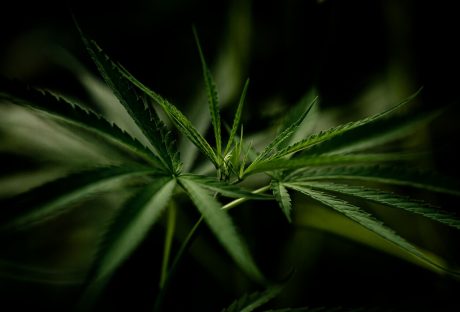In healthcare professionals’ dynamic and complex world, X-rays are a basic tool, providing unparalleled insights into body structures. While healthcare revolutionized diagnostic practices, weighing both sides of their uses is important.
Thus, one of the greatest advances is the switch from analog X-ray systems to digital X-ray machines. This alteration in healthcare practice not only offers new scopes for diagnosis but also comes out with many other significances compared to conventional ones.
In this article, we will emphasize the significance of digital X-rays and make it clear why they are vital in modern healthcare services.
Importance Of Digital X-Rays Within Modern Healthcare Service
Below is a list of the importance of digital X-rays within modern healthcare services.
1. Is More Accurate
Digital X-ray systems stand out because they offer rapid and accurate diagnoses. Similarly, they are significantly effective in emergency situations when the patient is suffering critically.
For example, in situations of trauma, an X-ray can quickly showcase the injury and extent of a fracture, leading to immediate treatment decisions.
On the other hand, they are valuable in detecting different health conditions, such as lung infections and dental issues, allowing appropriate and prompt medical treatment decisions.
Hence, it is the accuracy and speed that not only benefit patient care but also enhance the efficiency of medical care facilities.
2. Non-Invasive And Convenient
One of the major reasons healthcare prefers to adapt to digital X-rays is because of their non-invasive nature. Thus, this makes it a patient-friendly diagnostic choice, avoiding the risk and discomfort of invasive procedures.
Similarly, this means less discomfort and anxiety for patients, as X-rays need minimal preparation and less recovery time.
Therefore, the convenience of X-rays extends with the widespread availability in hospitals, dental offices, and clinics. This makes it a readily accessible tool that healthcare professionals can use for different medical aids.
3. Comprehensive Application
The versatility of X-rays lies in the broad range of applications across the medical discipline. They are integral to orthopedics in assessing bone injuries and lung examinations.
In addition, it is also used in dentistry for oral assessment and even in cardiology for analyzing certain heart conditions.
Furthermore, specialized x-rays procedures like XRD services offer real-time imaging, resolve complex medical treatments, and guide surgical procedures. Similarly, the portable system allows better care for those in remote communities.
Thus, this versatility makes x-rays indispensable for comprehensive patient care and capable of addressing different diagnostic requirements.
4. Provides Improved Image Quality
Digital X-rays provide pictures of higher resolutions than those made by conventional x-rays machines.
Thus, the technology enhances image processing, offering clear and precise pictures. They are of great importance while examining minor irregularities that are associated with different diseases. Hence, it increases the chance of conducting a correct diagnosis.
In addition, digital X-rays can be tweaked after capturing, thereby adjusting the brightness and contrast level. In addition, the ability to change the image enhances the optimal preparation of an image for a typical condition.
Moreover, the diagnostic system can be utilized in different disease disorders.
5. Reduced Radiation Exposure
The digital x-rays have been engineered to generate less harmful radiation than conventional X-ray machines. Hence, the ability to reduce patients’ and healthcare specialists’ exposure to radiation is one of the significant healthcare concerns.
Similarly, the problems with ionized radiation exposure are less, making digital x-rays safe for frequent and routine diagnostic procedures.
However, the digital x-ray equipment comes with a special dose setting where you can reduce the radiation dose. Hence, these attributes ensure that as little radiation is used to generate a diagnostic picture as possible.
6. Faster Results
A major significance of digital x-rays is their fast response time. In comparison to conventional x-rays, it requires the development of films.
Therefore, digital x-rays give immediate results that can be reviewed instantly. It becomes imperative during emergencies, leading to better decisions when dealing with a patient.
Furthermore, x-rays are easily transmitted electronically to other departments and hospitals, facilitating health workers’ work. Thus, digital distribution of medical images enhances consultation, joint diagnosis process, and second opinions.
7. Enhanced Retrieval
Digital X-ray images can be stored and recorded electronically, reducing the need to store physical film and including retrieval requirements.
Rather than filling up space, the medical images are electronically archived in an orderly manner, thereby making them easily available. Thus, this is useful in the healthcare center in tracking health status alterations among patients and allows easy access and review of patient histories.
Therefore, having a convenient way of storing digital images in electronic health records further assists in achieving effective coordination of care offered by healthcare professionals.
8. In Long Run Saves Money
Although buying digital X-ray machines is usually more expensive than conventional x-rays, their lifetime cost is always lower.
Therefore, cost-effectiveness is attained by eliminating chemicals and films, lowering maintenance requirements, and boosting operational efficiency.
In addition to that, the flexibility of digital x-rays caters to greater profits within healthcare facilities.
Why Is Radiology Significant In Healthcare?
Here is a list of reasons why radiology is significant in the healthcare services:
- Based on radiology requirements, it can offer enough guidance for treating the disease. Similarly, the radiographers who conduct therapy utilize highly complex equipment to deliver proper treatment.
- Screening offers a preventive measure emphasizing catching disease early to provide effective treatment.
- Similarly, detecting disease at an early stage assists in early treatment that prevents it from altering into a fatal condition. Moreover, it improves the scope of evolution and treatment of better technology.
- Tracking and evaluating disease with radiology assists the patient in seeing changes that occur in their condition. This eventually assists doctors in assessing whether to continue with the current treatment and look for another alternative.
Summing Up
Digital X-ray technology heralds one of the biggest milestones within medical imaging, signifying great progress compared to traditional and old X-ray systems.
Thus, with superior image quality, faster results, lower radiation exposure than traditional films, and streamlined retrieval, it is obvious that digital X-rays are a must-have within healthcare services.
Hence, digital X-rays play a bigger part in improving patient safety and the diagnostic process.
Read Also:

























All Comments
Бетонный завод
You're doing great. It was a pleasure to read. Nice article.